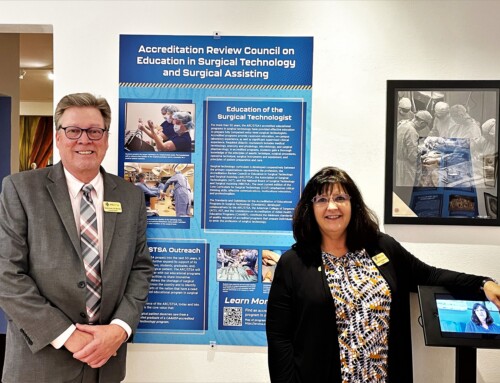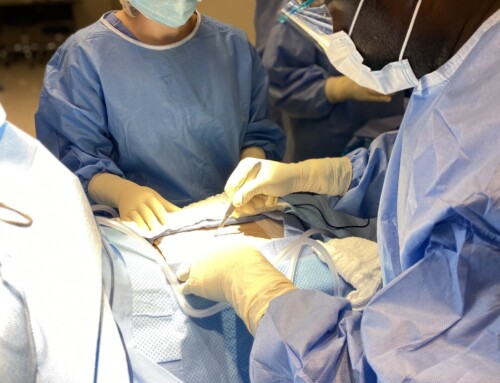Think Outside the Book is a new series showcasing your creative teaching techniques. In this edition, Dr. Joseph B. Long, CST, FAST, Lead Faculty, Academic Team Leader Surgical Technology Program at Lansing Community College, shares his “Thumbs Up/Thumbs Down” project, which aimed to improve student cognitive retention and create an enjoyable learning experience.
The Surgical Technology Program “Thumbs Up/Thumbs Down” Project: Engaging Students in a Meaningful Way
As I have been involved in teaching in the Surgical Technology profession for a number of years, I am constantly trying new things or attempting to come up with new ideas to better engage students. Ultimately, my goal is to help improve student cognitive retention and make learning interesting for all students. I have utilized faculty playing instructor and student roles, while demonstrating the competency process. We made a video of the role-playing demonstration for our students and found this provided greater success for students on their competency checkoffs.
In our most recent project, students were given an opportunity to be more engaged with each other while gaining a deeper understanding of their competencies. The goal of this project was to help them better understand the competencies that would be included on their examination. More broadly, this specific pedagogy also helped them understand the roles and interactions of students and instructors.
The list shared below includes the competencies our students present. What follows is a description of how we implemented this new exercise for our program.
SURG121 Comps Order List
- Application of Patient Monitoring Equipment with Patient Documentation
- Open Gloving
- Urinary Catheterization (male/female)
- Prepping a Patient
- Open a Surgical Pack
- Perform Surgical Hand Scrub
- Dry Hands and Arms Following Scrub
- Put on Sterile Gown and Gloves
- Set Up Back Table
- Instrument Identification
- Drape Mayo
- Set Up Mayo
- Gown and Glove Another Person
- Drape a Patient
- Remove Soiled Gown and Gloves
Putting Thumbs-Up/Thumbs Down Into Action
In the Surg-121 labs (which consist of two labs, each with 10 students), five students played the role of student, while their five classmates played instructor. The student “instructors” were given questions to randomly ask their students, who were assigned numbers 1-5. Once the randomly chosen students responded to the question or performed the task required, the student “instructors” gave them a thumbs up or a thumbs down response, holding up a laminated sign.
 Discussions followed each response and students were particularly engaging when there was disparity in the responses provided by the student “instructors.” Because they were conversing in a peer setting, as well, this discussion tended to be more open and less intimidating than a true instructor-student setting.
Discussions followed each response and students were particularly engaging when there was disparity in the responses provided by the student “instructors.” Because they were conversing in a peer setting, as well, this discussion tended to be more open and less intimidating than a true instructor-student setting.
Once this project was completed, the roles were reversed and new student “instructors” were provided with similar but different questions for the new students. The project was very interactive and the students really enjoyed it. In their survey responses following the program, students noted that it was a good learning experience, a chance to have open conversations regarding questions that were initially unclear, and recommended using for future classes.
Editor’s note: Research shows that “gamification,” or the practice of using gaming techniques for learning, benefits the brain in a number of ways. For example, when a person “wins” or receives positive feedback in a game, it can activate the release of dopamine. This same feeling of achievement during “gamified” learning can result in a long-lasting affinity for the academic subject or solving problems. See a recent article from The Edvocate for more information.
Do you use similar exercises or another unique and engaging technique? Let’s hear it! Send your ideas to the ARC/STSA Director of Education Services, Christy Baily-Byers, at christy.bailybyers@arcstsa.net.



